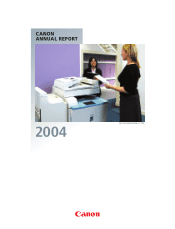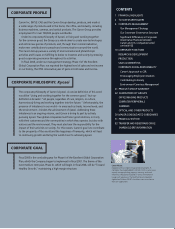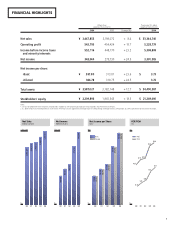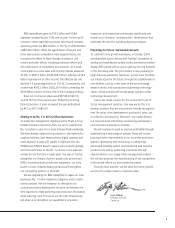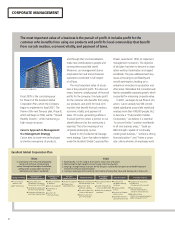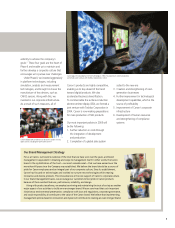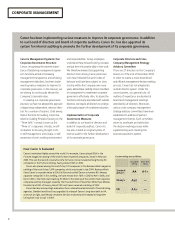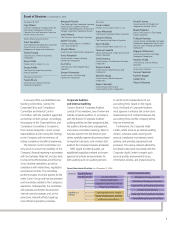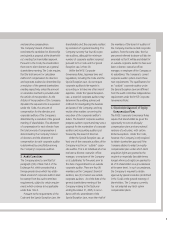Canon 2004 Annual Report Download - page 7
Download and view the complete annual report
Please find page 7 of the 2004 Canon annual report below. You can navigate through the pages in the report by either clicking on the pages listed below, or by using the keyword search tool below to find specific information within the annual report.
5
Our Brand Management Strategy
ardently to acheive the company’s
goals.” These four goals are the heart of
Phase II and enable us to maintain and
further develop a corporate culture that
encourages us to pursue new challenges.
Under Phase II, we invested aggressively
in platform technologies, including
simulation, analysis and measurement
technologies, and brought in-house the
manufacture of key devices, such as
CMOS sensors. Along with this, we
invested in our corporate infrastructure.
As a result of such measures, all of
Canon’s products are highly competitive,
enabling us to stay ahead of the trend
toward digital products. We also
accelerated business diversification.
To commercialize the surface-conduction
electron-emitter display (SED), we formed a
joint venture with Toshiba Corporation in
2004. Canon is now making preparations
for mass production of SED products.
Our most important policies in 2005 will
be the following:
1. Further reduction in costs through
the integration of development
and production
2. Completion of a global sales system
suited to the new era
3. Creation and strengthening of next-
generation businesses
4. Further improvement in technological
development capabilities, which is the
source of profitability
5. Improvement of Canon’s corporate
infrastructure
6. Development of human resources
and strengthening of compliance
systems
Canon began the development of SED technology in 1986. To accelerate its commercialization,
we formed a joint venture with Toshiba Corporation in 2004.
For us at Canon, our brand is evidence of the trust that we have won over the years, and brand
management is equivalent in meaning and scope to management itself. In other words, the Canon
brand is the crystallization of the trust—our most valuable asset—that we have earned over the
more than 60 years since the Company was established. We believe the brand should be a source of
pride for Canon employees and an integral part of our corporate culture. Since its establishment,
Canon has focused on technologies and worked to nurture new technologies while creating
innovative and diverse products. This innovativeness is the core support of Canon’s corporate culture.
In our brand management basics, we encourage our customers to feel pride in Canon products
because of their excellent features, performance, reliability, and design.
Along with product excellence, we emphasize winning and maintaining the trust of society as another
major aspect of our activities to build an ever-stronger brand. We are convinced that such important
initiatives as environmental preservation, compliance with laws and regulations, corporate governance,
and social responsibility all contribute to the value of the Canon brand. We believe that implementing
management policies based on innovation and kyosei will contribute to creating an even stronger brand.
Canon’s digital SLRs and lenses can be seen in action at many
sports events, including the UEFA EURO 2004
TM
.

